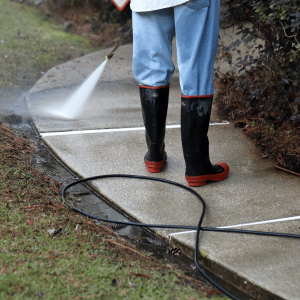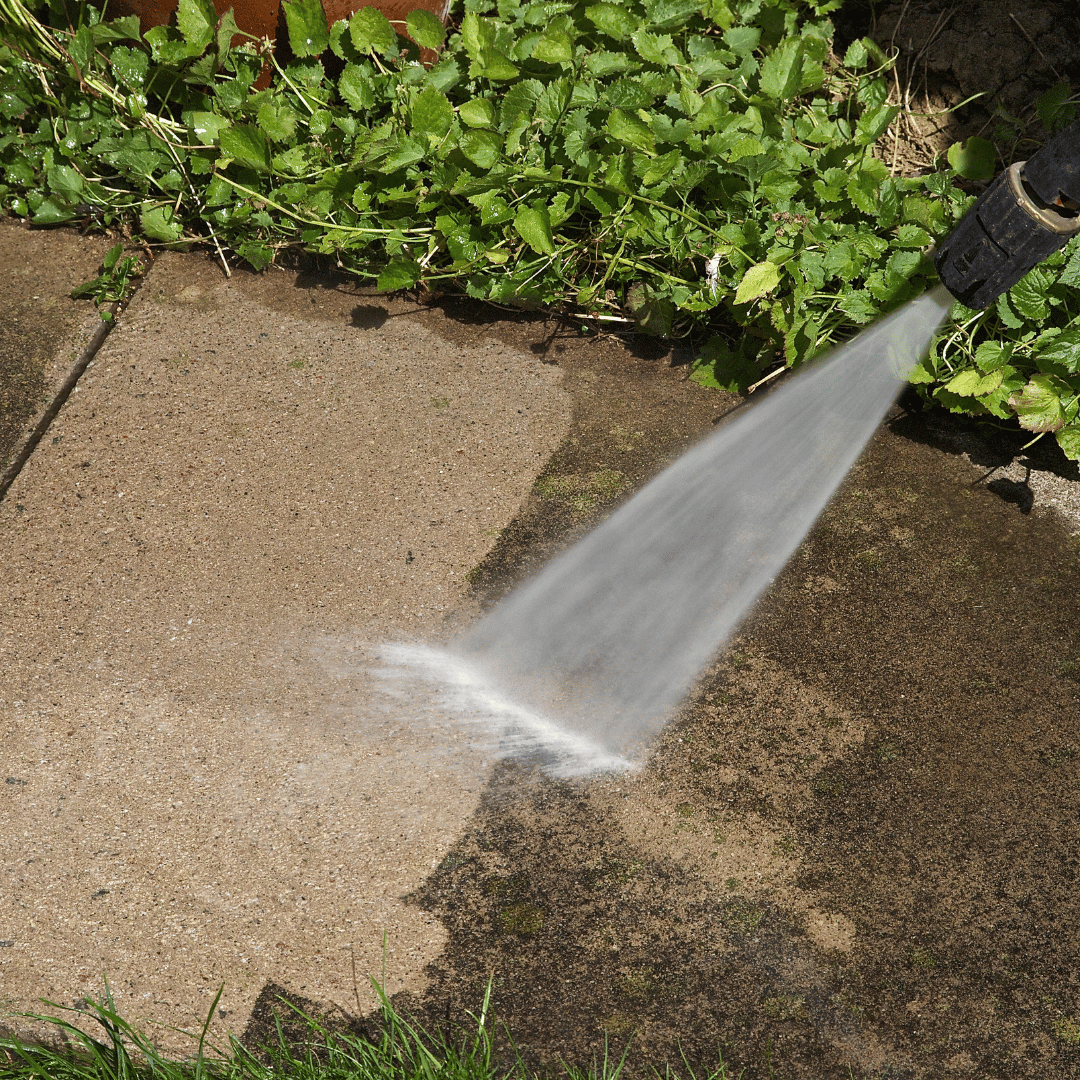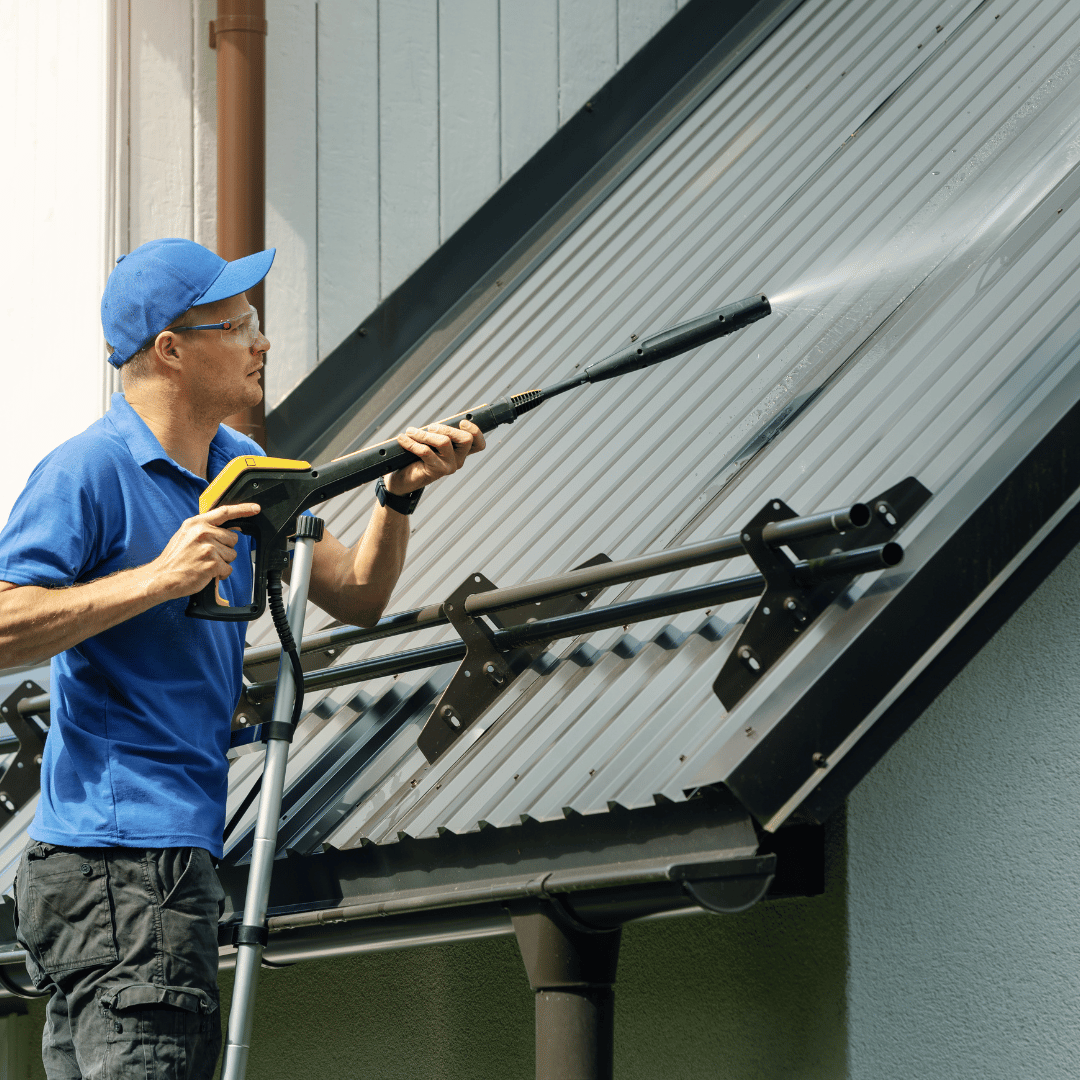
A Step-by-Step Guide on How to Effectively Pressure Wash Your Sidewalk
Keeping your sidewalk clean is essential not just for aesthetics but also for safety and maintenance. Over time, sidewalks can accumulate dirt, grime, algae, and stains, making them look unsightly and potentially slippery. One of the most effective ways to restore the appearance and safety of your sidewalks is through pressure washing.
Pressure washing uses high-pressure water to remove debris and stains, providing a thorough cleaning that regular sweeping or hosing down simply can’t achieve. At HomeSmiles, we specialize in preventative home maintenance, ensuring that all aspects of your property, including sidewalks, are well cared for. In this guide, we will explore the benefits of pressure washing your sidewalk, the right techniques to use, and important considerations to keep in mind. By the end, you’ll have the knowledge you need to keep your walkways looking their best while enhancing the overall safety of your home.
Should You Pressure Wash Your Sidewalk?
Pressure washing your sidewalk can be a game changer when it comes to maintaining the appearance and safety of your home. Here are some key benefits to consider:
- Enhanced Curb Appeal: A clean sidewalk dramatically improves the overall look of your property. It creates a welcoming environment and can significantly enhance curb appeal, especially if you’re planning to sell your home.
- Safety: Over time, sidewalks can become slippery due to algae, mold, or built-up dirt. Pressure washing removes these hazards, reducing the risk of slips and falls, particularly in wet weather.
- Preventative Maintenance: Regular cleaning helps prevent the deterioration of concrete and other materials. Removing contaminants like dirt, oil, and grime can prolong the life of your sidewalk and reduce the need for costly repairs in the future.
- Preparation for Other Projects: If you’re planning other home maintenance tasks, such as painting or landscaping, pressure washing your sidewalk beforehand can create a clean slate, making it easier to work without debris getting in the way.
- Eco-Friendly Cleaning: Pressure washing can be done using minimal chemicals, relying instead on the power of water to lift dirt and stains. This makes it an environmentally friendly option for maintaining your outdoor spaces.
In summary, pressure washing your sidewalk is a worthwhile investment in your home’s appearance and safety. As part of a comprehensive exterior home maintenance plan, it complements other services like gutter cleaning, window washing, and dryer vent cleaning.
What Should I Spray on My Sidewalk Before Pressure Washing?
Preparing your sidewalk before pressure washing is crucial for achieving the best results. Here’s what you should consider spraying on your sidewalk before you begin the pressure washing process:
- Pre-Treatment Solutions: Using a pre-treatment solution can enhance the effectiveness of pressure washing. Here are some options:
- Mild Detergent or Soap: A general-purpose cleaning solution or mild dish soap can help break down grease and grime. Mix it with water according to the manufacturer’s instructions.
- Degreaser: If your sidewalk has oil stains or heavy grime, a degreaser can be effective. Look for a product that is safe for outdoor use and follow the instructions for dilution.
- Eco-Friendly Options: If you’re concerned about the environmental impact, consider using vinegar or baking soda. These natural cleaners can be effective at lifting stains without harming the environment.
- Applying the Solution:
- Use a garden sprayer or a watering can to apply the solution evenly over the surface of the sidewalk.
- Ensure that the solution covers all stained areas and allow it to sit for 5 to 15 minutes. This dwell time helps the cleaner penetrate and break down tough stains.
- Importance of Rinsing: After the dwell time, rinse the sidewalk with water before pressure washing. This step helps remove any loose dirt or debris, ensuring a smoother pressure washing process.
By taking the time to spray the right pre-treatment solution, you’ll make your pressure washing efforts more effective, resulting in a cleaner and safer sidewalk. This preparation aligns with the principles of preventative home maintenance that HomeSmiles advocates, ensuring that all aspects of your home remain in top condition.
How to Pressure Wash a Concrete Walkway
Pressure washing your concrete walkway can rejuvenate its appearance and ensure safety for anyone who uses it. Here’s a step-by-step guide to effectively pressure wash your sidewalk:
Step 1: Gather Your Equipment
Before starting, make sure you have the following equipment:
- A pressure washer (preferably one with a PSI of 3000 or lower for concrete)
- A wide-angle nozzle (25 or 40 degrees) for gentle cleaning
- A garden hose
- A broom or leaf blower for debris removal
- Safety goggles and gloves
Step 2: Prepare the Area
- Clear the Sidewalk: Remove any furniture, planters, or other obstacles from the sidewalk. Use a broom or leaf blower to clear away loose dirt, leaves, and debris.
- Protect Surrounding Areas: If there are plants, flowers, or other surfaces nearby, cover them with tarps or plastic sheeting to protect against water pressure and cleaning solutions.
Step 3: Set Up the Pressure Washer
- Connect the Pressure Washer: Attach the garden hose to your pressure washer and plug it into a power source if necessary.
- Adjust the Settings: Set the pressure washer to the appropriate pressure setting for concrete. For most sidewalks, a PSI of 2000 to 3000 is ideal.
Step 4: Start Pressure Washing
- Begin at One End: Start at one end of the sidewalk and work your way to the other end to avoid walking on freshly cleaned areas.
- Maintain a Consistent Distance: Keep the nozzle about 12 to 24 inches away from the surface of the concrete. This distance helps prevent damage while effectively removing dirt and stains.
- Use Smooth, Even Strokes: Move the wand in a sweeping motion, overlapping each stroke slightly to ensure even coverage. Avoid concentrating on one spot for too long, as this can erode the concrete surface.
Step 5: Rinse the Area
- Once you’ve finished pressure washing, rinse the sidewalk with clean water to remove any remaining cleaning solution and debris.
Step 6: Allow to Dry
- Let the sidewalk dry completely before placing any furniture or decorations back in the area. This ensures that the surface is safe to walk on and allows any residual moisture to evaporate.
By following these steps, you can effectively pressure wash your concrete walkway, enhancing its appearance and safety. Regular maintenance, including gutter cleaning, window washing, and drying vent cleaning, complements your efforts in keeping your home looking its best.
What PSI Do You Need to Clean Sidewalks?
Choosing the right pressure setting is crucial when pressure washing your sidewalk. Using the correct PSI (pounds per square inch) helps ensure that you effectively clean the surface without causing damage. Here’s what you need to know:
Recommended PSI for Sidewalks
- Concrete Sidewalks: For most concrete surfaces, a pressure washer with a PSI range of 2000 to 3000 is ideal. This pressure is strong enough to remove dirt, stains, and mildew without causing etching or damage to the concrete.
- Paver or Brick Sidewalks: If your sidewalk is made of pavers or brick, you should use a lower PSI, around 1500 to 2000. This helps avoid dislodging the pavers or damaging the mortar joints.
- Older or Fragile Surfaces: For sidewalks that are older or have cracks, it’s wise to start with a lower PSI (around 1500). This ensures that you don’t inadvertently worsen any existing damage.
Importance of Nozzle Selection
In addition to selecting the correct PSI, using the right nozzle is vital for effective cleaning:
- 25-Degree Nozzle: Ideal for cleaning concrete sidewalks, this nozzle provides a good balance of pressure and coverage.
- 40-Degree Nozzle: Suitable for lighter cleaning tasks or for use on surfaces like pavers, where a gentler approach is necessary.
- Rotary Nozzles: These can be effective for heavily soiled areas but should be used with caution on delicate surfaces.
Testing the Pressure
Before you start cleaning the entire sidewalk, it’s a good practice to test the pressure washer on a small, inconspicuous area. This test can help you determine if the PSI is appropriate for your specific surface, allowing you to make adjustments as needed.
By using the correct PSI and nozzle, you can maximize the effectiveness of your pressure washing efforts while protecting the integrity of your sidewalk. This method aligns with a proactive approach to preventative home maintenance, ensuring that your exterior spaces are not only clean but also well-maintained.
Does Pressure Washing Ruin Concrete?
One common concern homeowners have when considering pressure washing their sidewalks is whether it can damage the concrete surface. Understanding the potential risks and how to mitigate them can help you make an informed decision about this cleaning method.
Potential Risks of Pressure Washing Concrete
- Surface Erosion:
- Using an excessively high PSI or a narrow-angle nozzle can erode the surface of the concrete over time. This erosion can lead to pitting, which not only affects the appearance but can also create a rough surface that is harder to clean in the future.
- Cracking:
- If your sidewalk already has cracks, using high pressure can exacerbate these issues. Water can seep into the cracks, freeze, and expand, leading to further deterioration of the concrete.
- Dislodging Loose Material:
- If the concrete is old or has loose materials, pressure washing can dislodge these particles, potentially creating uneven surfaces or exposing underlying materials.
How to Prevent Damage
To enjoy the benefits of pressure washing without the risks, consider the following tips:
- Choose the Right PSI: As previously mentioned, stick to a PSI range of 2000 to 3000 for concrete sidewalks. For older or damaged surfaces, start at a lower PSI.
- Select Appropriate Nozzles: Use wider-angle nozzles (25 or 40 degrees) for cleaning. Avoid using narrow nozzles (like 0 degrees) on concrete unless you need to remove tough stains, and always test in a small area first.
- Maintain a Safe Distance: Keep the pressure washer nozzle at least 12 to 24 inches away from the surface. This distance helps reduce the force exerted on the concrete while still effectively removing dirt and grime.
- Conduct Regular Maintenance: Regularly inspect and maintain your sidewalks by clearing debris and treating stains promptly. This preventive approach can help extend the lifespan of your concrete surfaces.
By being mindful of these considerations, you can safely pressure wash your sidewalk, enhancing its appearance without compromising its structural integrity. Regular exterior home maintenance practices, including pressure washing, contribute to a well-maintained property that avoids costly repairs down the line.
Pressure washing your sidewalk is an effective way to enhance your home’s curb appeal and ensure a clean, safe walking surface. By understanding how to pressure wash properly, including selecting the right PSI, using appropriate nozzles, and maintaining a safe distance, you can achieve impressive results without damaging the concrete. Regular maintenance, including sidewalk cleaning, contributes significantly to your overall interior and exterior home maintenance efforts, allowing you to avoid costly repairs down the line.
At HomeSmiles, we understand the importance of keeping your home looking its best while also ensuring its longevity. If you’re looking for professional assistance with pressure washing, gutter cleaning, or any other home maintenance services, we are here to help!
Ready to transform your sidewalk? Contact HomeSmiles today for expert pressure washing services and take the first step toward a cleaner, more beautiful home. Let us handle all your preventative home maintenance needs, so you can focus on enjoying your space!
- Protecting Your Property: Why the Right Cleaning Method Makes All the Difference
- The #1 Thing That’s Dulling Your Curb Appeal (And How to Fix It)
- How Maintenance Bundles Provide Peace of Mind for Busy Small Business Owners and Facility Managers
- Essential vs. Complete Home Packages: Choosing the Right Preventive Care for Your Property
- How a Simplified Service Model Benefits Both Homeowners and Franchisees Alike


